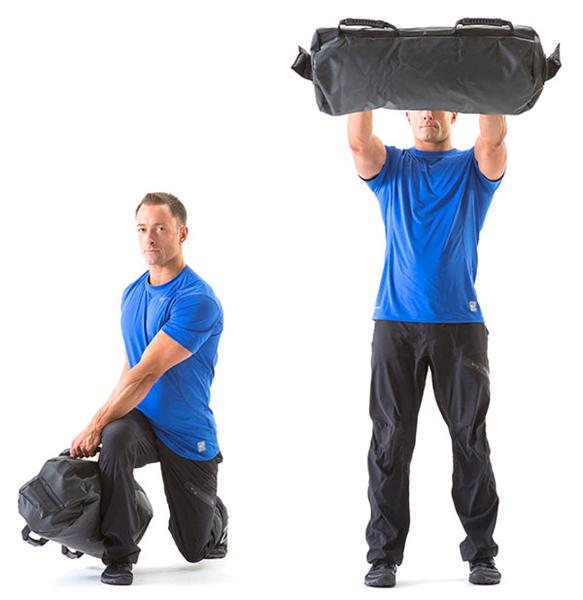How to Build Real Athleticism with Hybrid Exercises
By Josh Henkin, Sr. RKC, Creator of the DVRT System, CSCS

Over a year ago I explained how to gain real efficiency from an often-underused training method—complexes. And I didn’t just discuss using complexes, but also smarter methods of using them! After all, doesn’t everyone want more effective and efficient workouts?
Since then I have discovered a few key concepts that have really changed some of my ideas about using complexes. First of all, the term "complex" is somewhat misleading. In the world of strength training, the word "complex" has taken on several meanings. Today, many people define a complex as a combination of many exercises performed together. The other definition is described by the late Dr. Mel Siff in Supertraining, "Complex training refers to the concurrent use of different training means in the same workout, microcycle or mesocycle."
Simplifying is a good thing—especially with terminology. That’s why I adopted Dr. Siff’s definition of "hybrids". A hybrid is one exercise made up of multiple exercises. Since we can use flowing combinations or micro-sets we have to add one more step—hybrid sets and hybrid repetitions.
Here’s an example of a hybrid set:
-Cleans, 5 repetitions
-Squats, 5 repetitions
-Presses, 5 repetitions
Here’s an example of a hybrid repetition:
-Clean to squat to press then repeat for a specific number of total repetitions
Why make things so complicated and confusing?
Let me assure you, it’s worth it! Both concepts are incredibly effective, but can feel completely different. Here are a few benefits as described by Dr. Siff:
- Exercises a greater variety of muscle groups in a shorter amount of time
- Saves time in your busy modern life
- Exercises a greater joint range of motion
- Prevents overloading single muscle groups
- Combines strength, speed, and suppleness training
- Avoids mental and physical stagnation
- Avoids establishing rigid or detrimental movement patterns
- Increases blood flow to all the muscles that control relevant joint movements
- Can be used to break down complicated moves for faster learning
- Stimulates new growth and performance
A hybrid set is very effective for doing a lot of work in a short amount of time. It is probably more effective for building power endurance than just knocking out high repetition sets. After all, the more repetitions you perform, the more likely your power drops. Have you ever tried to sprint for a mile?
A downside of using hybrid sets is that the exercises first in the series are met with a better effort than those later in the set. As I wrote previously, many people perform these hybrid sets in an illogical order for this reason.
In the clean, squat, and press sequence, the presses would be performed in the most fatigued state. That doesn’t make sense since that is the exercise that limits the amount of weight one could use in the series to begin with. Therefore, performing cleans, presses, and squats would make the most sense.
Since that was already covered in a previous article, I want to focus more on hybrid repetitions. I also think more people should perform hybrid repetitions, because hybrid repetitions require more athleticism.
If we close our eyes and imagine a favorite sport and athlete, we can visualize the graceful way the athlete moves, changes direction, accelerates and decelerates in seemingly effortless ways. Hybrid repetitions allow us to train these same qualities. We learn to move with flowing movements, and how to transition from one movement pattern to another, change directions, accelerate, and decelerate athletically. We can also build a very different type of strength that truly resembles what functional training should look like.
The best parts are the infinite combinations which are possible with hybrid repetitions. Especially when we take into account planes of motion, the levels of stability we can manipulate, and the way that one movement can naturally lead into the next movement.
I hope that I have helped open your mind to the ways you can use hybrid repetitions, and how we can use the Dynamic Variable Resistance Training to not just add variety, but a new purpose for your functional training. In programming for the DVRT™, we regularly use all the variables mentioned above. Then, when we add load to the equation, we have a complete fitness program that is unique and incredibly effective. You can truly train like an athlete with these hybrid repetitions.
Back